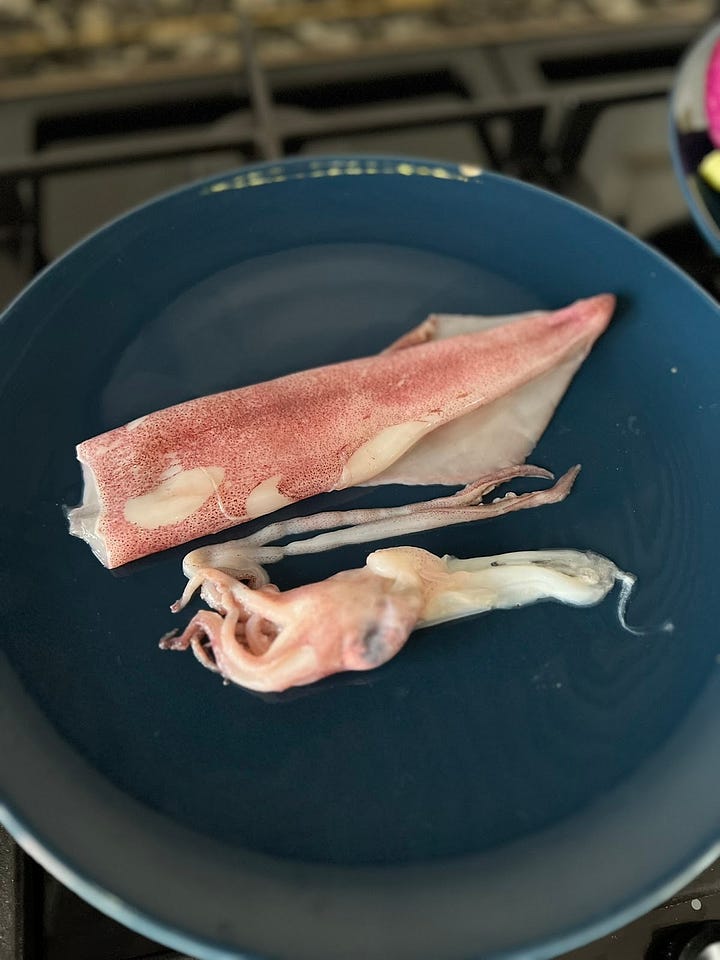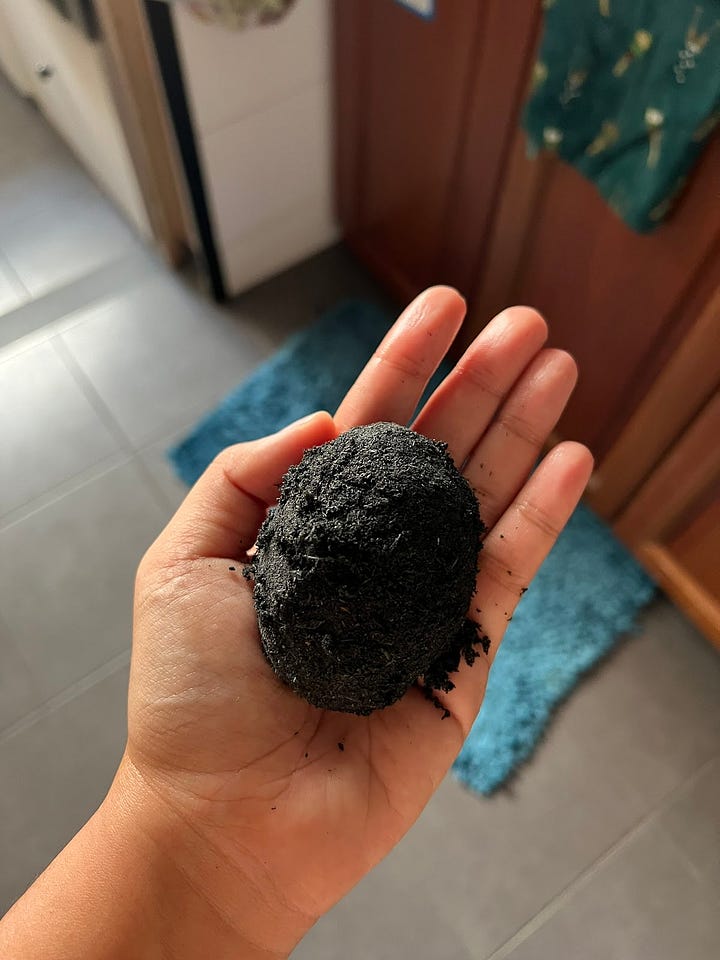I’ve just gotten back from a truly wonderful short trip to Paris - it has been four days of eating, lots of stair-climbing, making new friends, and of course celebrating the launch of Plantasia. A big thank you to Pearlyn and The Hood Paris for hosting such a beautifully cosy and intimate event; to my moderator Clément, who came up with the idea for a Paris book launch in the first place and took a train down from Lyon just to be there; and the folks who took time out of their busy schedules to spend the night with us. We left with such a fondness for the city and for the people who live in it, and we can’t wait to be back again 🥰 (It was such a coincidence that one of the biggest champions of hawker food culture, KF Seetoh, was in Paris with his team for an Urban Hawker pop-up at The Hood. If you’re in the city, definitely check the event out.)
Today, on the newsletter, I have something truly special for you. I’ve invited one of the most soulful Singaporean cooks I know, Nurdiana Zulkepli, to share about a dish that I’ve drooled over on her Instagram - squid stuffed with salted egg and cooked in lemak chilli padi. Lemak chilli padi is one of my all-time favourite dishes to order at nasi padang stalls in Singapore (it’s typically prepared with chicken), and Diana is so detailed in her instruction of this dish that I can’t wait to give this a go.
P.S. If you’ve seen the sambal goreng recipe in Plantasia, it comes from Diana too 🩷
Salted egg-stuffed squid
By Nurdiana Zulkepli
The first time I laid eyes on this dish (sotong sumbat telur asin lemak chilli padi) was when one of my friends ate it in Malaysia and posted a photo of it on social media. It intrigued me instantly. I’m no stranger to stuffed squid; traditionally in Malay culture, we stuff these molluscs with minced chicken and spices before braising them in a fiery turmeric and coconut gravy (sotong sumbat ayam cincang lemak chilli padi). But this was something special - a whole salted egg yolk had been stuffed into each squid. Sliced in half, the bright orange centre is revealed and the gelatinous, creamy yolk mixes in with the gravy for a burst of flavours: spicy, salty and citrusy all at once.
Cleaning the squids
To accomodate the yolks, you’ll need 4 medium-sized squids, roughly 6-10cm in size. To clean them, wash the exterior under running water and gently rub the surface to eliminate grime such as sand and salt minerals.
Separate the squid’s mantle from the tentacles by grasping the tentacles in one hand and the head in the other and pulling gently until the tentacles detach. Cut the squid right above the eyes and keep only the tentacles - the rest is normally tough to chew when cooked. Before you discard these parts, look out for the ink sac. Be careful not to rupture this sac as this will release the ink and stain your work surface. For this dish, we will not need the ink but I would not waste this. I have a container in my freezer for unused ink sacs. When I have collected enough, I add them to dishes such as squid ink pasta. If the ink sac happens to break, simply wash the squid under running water to remove any trace of the ink before proceeding with the cooking of this dish.


In the mantle, if you’re lucky, you might find squid eggs. These come in the form of white, translucent, gelatinous-looking sacs which, when cooked, will coagulate and take on the texture of mochi when just-cooked. To create space for the salted egg, the squid’s mantle would have to be hollow, so remove the egg and set it aside for now.
Running down the centre of the squid’s body is a transparent, plastic-like structure known as the quill that serves as the backbone of the squid. To remove it, gently pull it out of the squid body. Many a time I have broken it prematurely; this is not a big issue - I simply would have to dig deeper to locate the other half. It takes practice!


Now is time to clean the mantle. Sometimes, the squid comes with its unfinished meals like small fishes. Be careful not to prick your fingers on small bones as you gently scape away any remaining tissue and rinse the interior of the squid with running water. You can also do it with chopsticks if you prefer to.
Some cooks remove the squid’s skin, finding that it produces a cleaner aesthetic. I personally do not as it does not affect the integrity of the dish. But for those of you who want to do this, the skin is thin and easy to peel off when you pinch it with fingers and pull it down towards the tail. Pat the squid dry with paper towels. Your squid is now ready to cook!
Stuffing and cooking the squid
A common misconception is that all salted eggs sold at supermarkets are boiled. Labels will indicate if the eggs are cooked, but will not when they are raw. In Singapore, the raw salted eggs tend to be sold in packets of four, and are covered in a layer of black, salted charcoal which preserves the eggs and give them a unique flavour.
For 4 squids, you will need 4 raw salted eggs. Crack the eggs into a bowl and separate the yolk, which is solid, by pouring the whites into a measuring jug. My first trials of this dish involved me attempting to stuff the yolk and whites into the squid all at once, but this creates a messy situation with lots of dripping egg white. I’ve since learnt to stuff the yolk and whites separately. First of all, whisk the whites lightly with 1 tbsp water - this loosens them up and makes it easier for them to poured into the squid.








